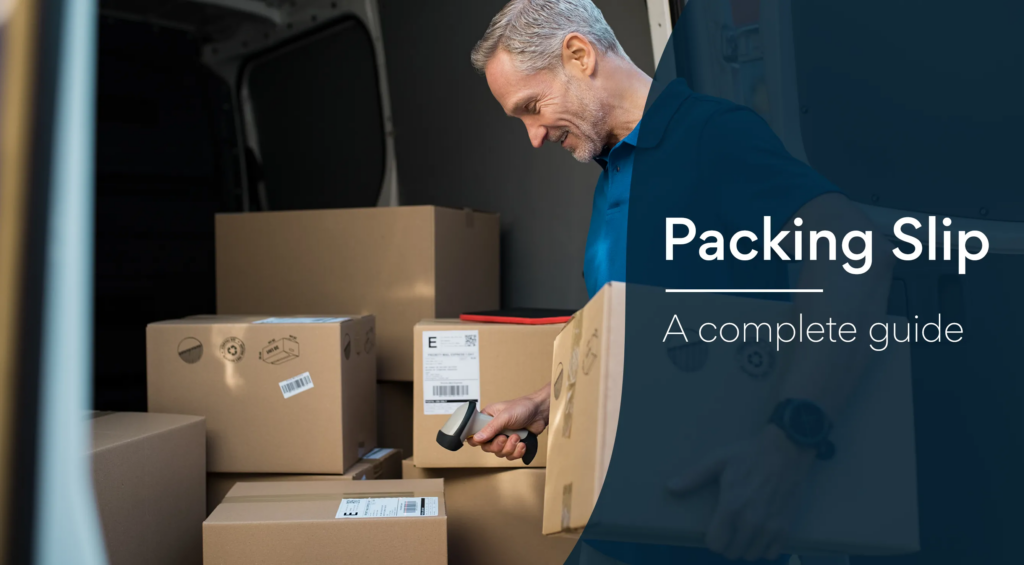
Understanding the importance of packing slips is vital for businesses of all sizes. They facilitate efficient inventory management by allowing companies to keep track of the products sent and received. Moreover, packing slips aid in streamlining the order fulfillment process, reducing errors, and enhancing customer satisfaction. In this article, we will delve into the meaning, benefits, and provide you with a useful packing slip template.

What is a packing slip?
A packing slip, also known as a delivery note or a shipping list, is a document that accompanies a shipment of goods. It provides important information about the contents of the shipment and serves as a reference for both the sender and the recipient. The packing slip typically includes details such as: Sender and recipient information, Shipment details, Itemized list, Quantity verification, Special instructions, Return policy.
The packing slip is typically placed inside or attached to the outer packaging of the shipment, allowing the recipient to easily identify and verify the contents upon arrival. It serves as an important reference document for inventory management, order fulfillment, and reconciliation purposes for both the sender and the recipient.

What should a packing slip include?
Here are the key elements that a packing slip should include:
Sender and recipient information: Include the complete contact details of both the sender (shipper) and the recipient (consignee). This typically includes names, addresses, phone numbers, and email addresses.
Shipment details: Include information about the shipment, such as the shipment or order number, date of shipment, and any other reference numbers or codes relevant to the transaction.
Itemized list: Provide a detailed breakdown of the items being shipped. Include the following information for each item:
Packaging information: Indicate the type of packaging used, such as boxes, cartons, or pallets, and include the total number of packages being shipped. This helps the recipient verify that they received all the packages mentioned.
Additional instructions or notes: If there are any special handling instructions or specific information that the recipient needs to know, include them in this section. For example, mention if certain items require careful handling or if any items are back-ordered and will be shipped separately.
Payment information: If applicable, provide details about the payment method, such as the payment terms, due date, and any instructions on how to make the payment.
Return policy: Include information about your return or exchange policy, specifying the timeframe and process for returns, if relevant.
Company logo and branding: It is common to include your company logo, name, and any relevant branding elements on the packing slip to reinforce your brand identity.
Remember to design the packing slip in a clear and easy-to-read format. Including the necessary information ensures that both the sender and the recipient have a comprehensive record of the shipment and can easily reconcile the received goods with the original order.
The benefits of packing slip

Here are some key advantages
Accurate order verification
allows the recipient to verify the contents of the shipment against the original order. They can cross-check the items listed on the packing slip with the actual items received, ensuring accuracy and reducing the chances of errors or discrepancies.
Improved efficiency and organization
A packing slip helps streamline the receiving process for the recipient. They can quickly reference the slip to identify the items and quantities received, making it easier to unpack and sort the goods efficiently.
Facilitates inventory management
By providing an itemized list of the shipped goods, a packing slip assists the recipient in updating their inventory records accurately. This information is crucial for maintaining stock levels, identifying shortages, and planning future orders effectively.
Resolving disputes or discrepancies
In case of any issues or discrepancies with the shipment, a packing slip serves as a reference document. It can be used to resolve disputes between the sender and the recipient or to initiate the process of returning or exchanging items.
Enhanced customer experience
Including a packing slip demonstrates professionalism and attention to detail. It shows that you value accuracy and customer satisfaction. When customers receive a well-documented shipment, it enhances their overall experience and builds trust in your business.
Simplifies returns and exchanges
If a customer needs to return or exchange an item, a packing slip provides the necessary information and instructions. It outlines the return policy, including any specific conditions or steps to follow, making the process smoother for both the customer and your business.
Legal and financial documentation
A packing slip can serve as a legal and financial record of the transaction. It provides proof of the items shipped, their quantities, and their value, which can be useful for accounting purposes, tax reporting, or legal documentation.
Including a packing slip with your shipments is a standard practice that offers numerous benefits. It improves accuracy, efficiency, and customer satisfaction while providing important documentation for both parties involved in the transaction.
In conclusion, the packing slip guide is an essential document for effective shipping and receiving operations. Its meaning, benefits, and template enable businesses and individuals to maintain accurate records, enhance communication, and ensure smooth logistics, ultimately contributing to improved customer experiences and overall operational efficiency.